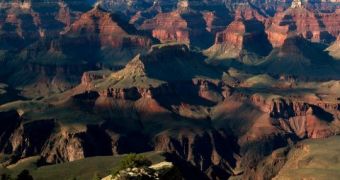Millions of people who choose to visit various national parks in Arizona on an yearly basis are often kept from admiring the scenery by the fact that the air is rather hazy, as a result of emissions coming from the states' power plants.
Not only does this haziness obscure landscapes, but it also poses considerable threats to the public health – children and elderly people in particular –, as the chemical compounds floating around in the air here have been linked to cases of asthma and lung diseases.
It now seems that the US Environmental Protection Agency (EPA, for short) has decided to tackle this issue and work towards improving both visibility and health conditions at Arizona's most appreciated wilderness areas.
As Jared Blumenfeld, EPA's Regional Administrator for the Pacific Southewest explains, “Visitors to magnificent national parks in Arizona like the Grand Canyon are critical to the state's economy. This proposal will make scenic vistas clearer while cleaning the air that Arizonans breathe.”
Thus, some of the regions they have in mind are the Grand Canyon, the Saguaro National Park and the Petrified forest, all of which are presently obscured by sulfur dioxide and soot coming from power plants nearby.
EPA's official website informs us that, in accordance to the Clean Air Act, Class 1 Areas in the US (i.e. national parks and wilderness areas), must have their natural visibility restored by improving on the activity of older power plants that are located in their vicinity and that negatively impact on the air quality in the region.
Together with reducing their sulfur dioxide and soot emissions, power plants will also be made to cut down on the amounts of nitrogen oxides they release into the atmosphere.
The three Arizonan power plants that will have to abide by these new standards are the Cholla Power Plant, the Apache Generating Station and the Coronado Generating Station.
For the time being, EPA's proposal is subject to public comments, and a final decision is expected to be made on November 15, 2012.

 14 DAY TRIAL //
14 DAY TRIAL //